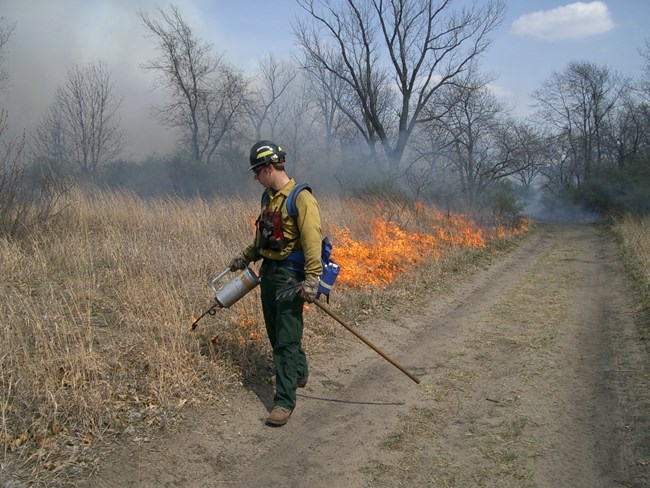
NPS Image Collection Indiana Dunes National Lakeshore was established by Congress in 1966 (re-designated Indiana Dunes National Park in 2019). By that time, people had already made many changes to the national park's natural areas. Many white pines were logged in the 1830s and 1840s. Farmers started moving into the region in the late 1800s. Around 1900 industry came into Gary and East Chicago, just west of the national park. By the 1930s, residential communities sprang up and escalated in the 1950s with the post-war economic boom. The late 1950s and early 1960s brought the development of a coal-fired power plant and a steel mill into the midst of extensive natural sand dunes and wetlands. With each of these changes came impacts to the environment. Logging changed the species composition of the forest and caused erosion in the dunes. The farming movement resulted in the drainage of wetlands, the introduction of exotic species, and the extirpation of some predatory animals. Subsequent residential development accelerated the ditching and drainage of wetlands, the modification of land use, and the addition of large numbers of structures. Industrial expansion resulted in similar impacts as well as an increase in air pollution. As development increased, so did efforts to suppress naturally occurring fires. All of these impacts affect the way the national park is managed today. Resource managers are mitigating the damage done in the past. Water Quality Monitoring Indiana Dunes National Park features several swimming beaches along the shore of Lake Michigan. These beaches are sometimes impacted by high levels of bacteria after heavy rainfalls. High bacteria levels can be a threat to human health. The national park monitors the water quality at its beaches on a regular basis during the swimming season, posting warning signs noting high bacteria counts on affected beaches. For more information and current conditions, visit our Beach Monitoring (E. coli testing) webpage. 
NPS image collection Indiana Dunes National Park is in the process of restoring portions of an extensive wetland complex called the Great Marsh, south of the primary dunes in the eastern half of the park. By plugging ditches, restoring the area's hydrology, removing invasive plants, and planting native species, the national park is re-creating a diverse and beautiful ecosystem. Because wetlands naturally filter contaminated water, restoring the Great Marsh will also help to improve the area's water quality. Coal Ash Contamination from Surrounding Industry Construction of the coal-fired power plant began in 1959 and it became operational in 1962. Between 1962 and 2018 the facility supplied electricity to the northern half of Indiana. In spring 2018 the facility retired its coal-fired operations. In 2005, EPA identified a total of 24 areas at the facility that required investigation for possible contamination. A series of sampling events and environmental studies have been conducted since to better understand the nature and extent of contamination. It was determined that coal combustion residuals, or coal ash, was the main source of contamination. Area A included an area that was used for the temporary placement of coal ash on the ground. That area had contributed to contamination of the groundwater and was subsequently cleaned up under EPA’s 2012 Final Decision. EPA’s Final Decision/Response to Comments for Area C includes a remedy for that disposal area and the downgradient areas of impact within the Indiana Dunes National Park.
In presettlement days, naturally occurring fires cleared dead wood and maintained prairie and savanna habitats. During the years when fire suppression was the rule, many woody trees and shrubs encroached on these open habitats and prairies and savannas were lost or significantly altered. Not only did this reduce habitat diversity, but it reduced the plant and animal diversity as well. Today, the national park has a rigorous controlled burn program which is restoring the area's prairies and savannas and helping to maintain critical habitat for the endangered Karner blue butterfly. Home Site Restoration When the national park was established in 1966, close to 1,000 commercial buildings and home sites were included within the park’s boundary. A number of historic structures have been preserved, and some other buildings were renovated to create office space, interpretive centers, and other park facilities. The majority of these building have been removed in order to restore the natural areas that once were there. Resource managers collect seeds from a variety of native plants within the park to ensure that these areas are planted with native species of local genotype. 
NPS image collection Invasive exotic plants, brought here either intentionally or accidentally from other parts of the world, out-compete native plants for life-giving resources. The national park is working to reduce the population of these undesirable species with a goal of eventually eliminating them. Intensive programs to remove purple loosestrife, garlic mustard, phragmites, Canada thistle, mugwort, hybrid cattail, and many other invasive species are ongoing.
|
Last updated: July 26, 2023
